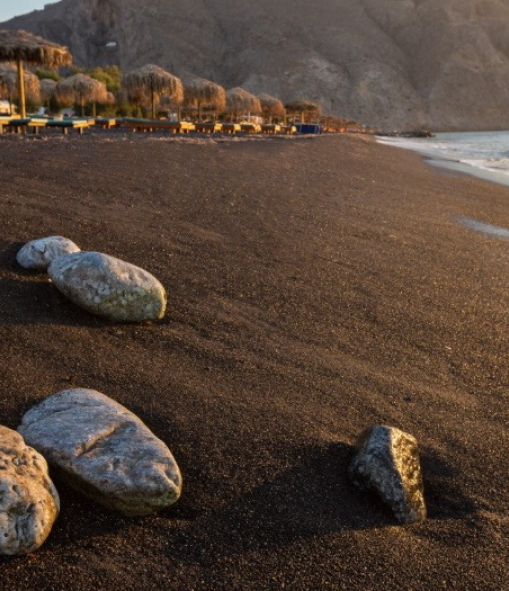Therassia
Thera, also known as Santorini, is the jewel of the southern Aegean Sea, located about 200 kilometers (120 miles) southeast of the Greek mainland. This captivating island, the largest in a circular archipelago that shares its name, is the breathtaking remnant of an ancient volcanic caldera.
The endless summer
of the Aegean
Climate
Santorini
Santorini, like the other Cycladic islands in the Aegean Sea, enjoys a typical Mediterranean climate with warm summers and abundant sunshine, making it a popular summer holiday destination.
Hot weather begins in June and lasts through September, with July and August being the peak season when the island is most lively. Spring, starting in April, offers milder temperatures and fewer crowds, making it a great time to explore the island’s stunning landscapes and volcanic beauty.
Overall, the warm climate and breathtaking views make Santorini one of Greece’s most visited islands.
Enjoy the sun

At a Glance
Geomorphology

Santorini’s unique geomorphology is shaped by centuries of volcanic activity, as it sits atop the volcanic arc of the Aegean Sea, which stretches about 500 km in length and 30-40 km in width, from Greece’s mainland to Turkey.
The island’s geology is diverse, with prevolcanic limestone layers and shale rocks, and volcanic materials like pyroclastics, lava, and Theran earth, which form its fertile ground, historically supporting crops like vines, cereals, and legumes.
Despite being one of the most arid regions in the Aegean due to limited rainfall and underground wells, Santorini has a temperate climate with high winter temperatures and moderated summer heat.
The southeastern part of the island is dominated by the mountain of Prophet Elias, with its monastery, and Mesa Vouno, where ancient Thera was built, while the eastern shores are lined with beaches of black volcanic sand.
* Source: “Santorini: And the sea brought forth the earth”/ Topio Publications/ From the text of archeologist Kiki Birtacha.